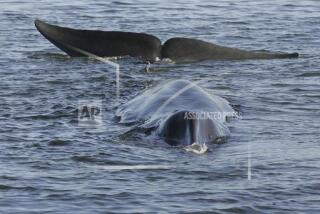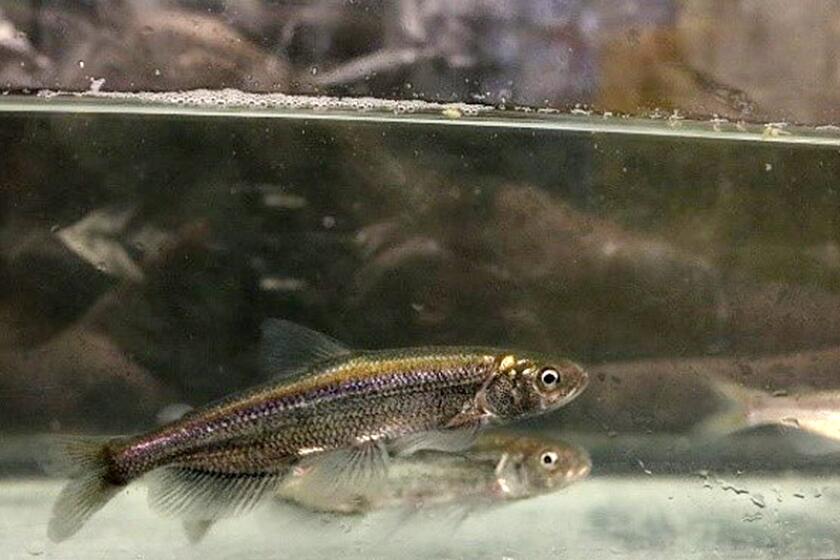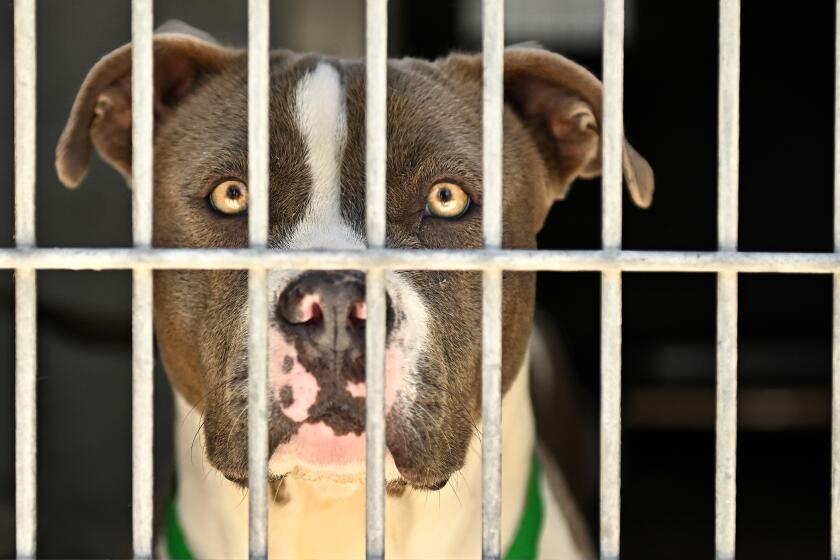Program to Destroy Cattle Gets Underway
- Share via
LONDON — The destruction of cattle considered most at risk from “mad cow disease” got off to a halting start Friday with more bureaucratic tangles than drama.
About 100 cows older than 30 months were slaughtered in Scotland, stained with an indelible yellow dye and then sent to be rendered, keeping them out of the food chain.
Thousands more animals will be destroyed and their remains incinerated as the program gathers speed next week.
The government-ordered cull is aimed at restoring consumer confidence in British beef and encouraging the European Union to lift an international export ban imposed in March after reports of a possible but unproven link between bovine spongiform encephalopathy, or BSE, and an incurable human brain disorder, Creutzfeldt-Jakob disease.
Agriculture Minister Douglas Hogg had announced that a 3,000-head-a-day cull would begin earlier this week, but the establishment of about 100 collection and killing centers and other arrangements delayed the start of a process that will likely last years.
Under the program, according to representatives of the National Farmers Union, farmers will decide--as they do now--when to send their cattle to market. But older animals will be destroyed and rendered to avoid any chance of human consumption.
With the European Union paying 70% of the cull costs, farmers have been told to expect about $1.50 per pound live weight for their animals.
The cull will eliminate mostly dairy cattle, which can be productive for many years and which have been hardest hit by BSE.
Earliest targets, though, will be older beef cattle.
Since the crisis began six weeks ago, farmers have been feeding those herds without any prospect of selling them for meat.
In all, as many as 750,000 of the animals slaughtered in Britain in the coming year will be destroyed without any use of meat or byproducts.
Britain claims that the export ban is disproportionate and unjust.
The $6-billion-a-year industry is still reeling from the crisis, but British consumers are already returning to beef. Consumption has rebounded to about 85% of its pre-crisis level, according to the Meat and Livestock Commission, and British beef is beginning to reappear at supermarkets and restaurants.
BSE has killed about 160,000 British cows in the past decade.
It is believed to have been introduced to British herds in high-protein feeds containing the ground remains of infected sheep.
That practice is now banned. Older animals are at the greatest risk from BSE because the disease has a long incubation period.
In addition to a cull supported by farmers, the British government is also proposing the enforced slaughter of 42,000 animals in herds where BSE has been most prevalent. European agriculture officials, though, told Hogg in Luxembourg this week that they want a more sweeping cull before deciding whether to relax the ban.
More to Read
Sign up for Essential California
The most important California stories and recommendations in your inbox every morning.
You may occasionally receive promotional content from the Los Angeles Times.










